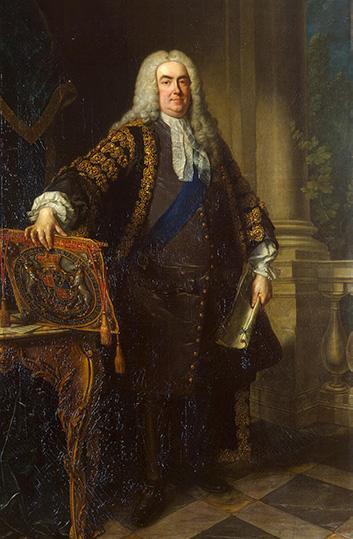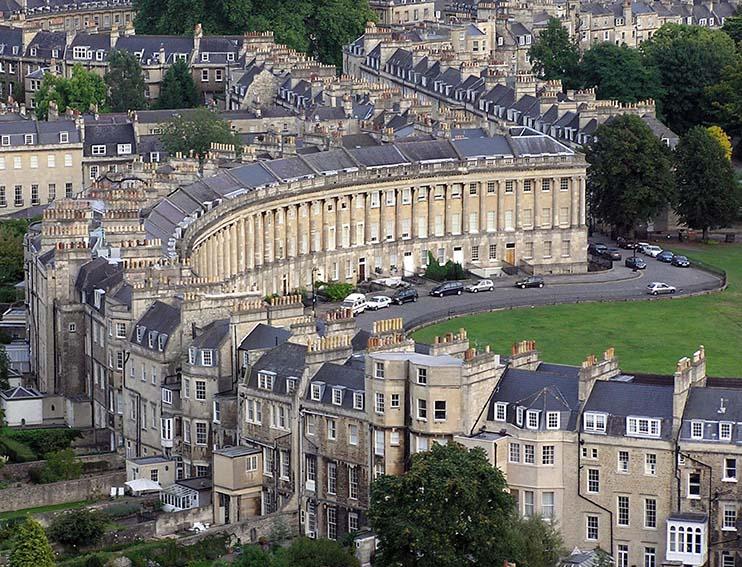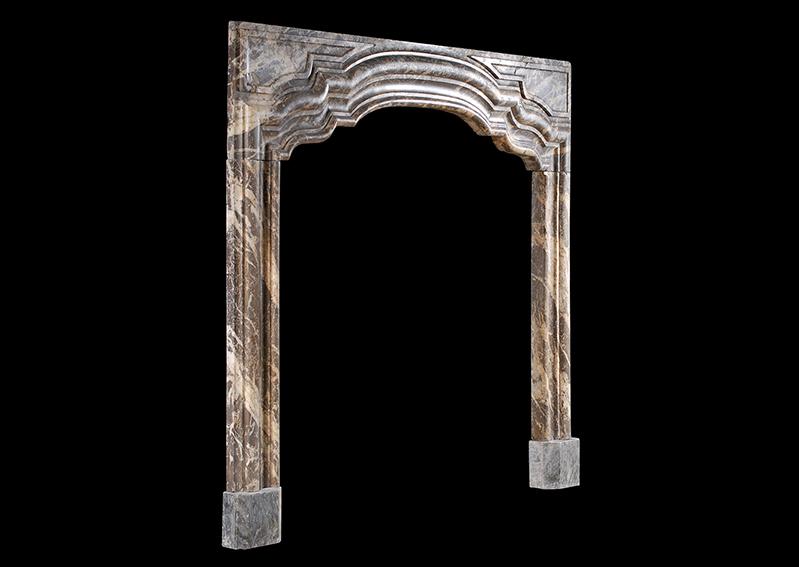2014 marks 300 years since the of the ascension of George I to the British throne initiating the beginning of a historical time frame known as the Georgian period, so named for the four King Georges to reign in succession between 1714 - 1830. George I was the first Hanoverian king of Britain, and the changing politics of his reign allowed for major developments in the art, culture, literature, architecture and design styles of the time, in contrast to those seen during the former Stuart rule of Britain. With the exception of the Prince Regent who became George IV, the Georges showed relatively little interest in the arts, and yet their style and mode of rule made these developments possible. Because of the length of the Georgian period and the changing politics that came with each successive rule, the Georgian period saw not just one style, but a number of styles, driven primarily by the design innovators of their day. George I was born Georg Ludwig in Hanover on the 28th of May 1660. He was the son of Ernest August, the Elector of Hanover, but his claim to the British throne came through his mother, Sophia of Hanover, who was the daughter of Elizabeth Stuart and therefore granddaughter of the first Stuart king of Britain, James I. George's mother was intelligent and cultured and took a great interest in the upbringing of her children, and his father taught the young George to hunt and ride and take an interest in military matters. In 1682 George married his first cousin Sophia Dorothea of Celle for economic and political reasons as it ensured the unification of Hanover and Celle and provided a healthy income for the couple.

Their marriage produced two children, the future George II and a daughter, also named Sophia Dorothea, but was otherwise punctuated with infidelity and scandal. George preferred the company of his mistresses to that of his wife, and in turn Sophia Dorothea embarked on her own affairs resulting in a dissolution of their marriage and her eventual imprisonment in 1692, where she remained until her death in 1726. In 1701 the Act of Settlement was passed, nominating George's mother Sophia as heiress to the English throne should William III and his heiress Anne have died without issue. The act disqualified anyone of the Catholic faith to inherit the English throne, leaving the Kingdom in solely protestant hands. There were over 50 catholic relatives of the Stuarts at the time who had a stronger claim to the throne, but the Act of Settlement ensured that they would never succeed in attaining it. Sophia died shortly before Queen Anne, and so it was that in 1714 at the age of 54 it was George who would travel to England to be crowned King George I. After his ascension George I faced a small Jacobite rebellion in support of the Catholic James Stuart who had a much stronger claim to the throne, but it was quickly suppressed leaving George I free to continue his reign. George I was an unpopular monarch. He spent a great deal of his time in Hanover rather than England and was unable to speak English until much later in his reign. The public perception of his mistreatment of his wife as well as the perceived greed of his mistresses cemented that unpopularity. Despite this however, George I's reign was a time of relative peace. His frequent absences and lack of interest in the English language and culture in fact cemented the future of English politics and became the cornerstone of his rule. Due to his absence, Robert Walpole was called to the post of 'Prime Minister', and cabinet positions grew in importance in the governance of the country. The Whigs dominated government during George I's reign, and due to his lack of fluency in the English language, George relied on his ministers heavily. After the collapse of the South Sea Company in 1720 (an economic crisis known as the South Sea Bubble) a project that had large financial backing from the aristocracy and royalty, Britain found itself in an economic crisis making George I and his ministers even more unpopular. This left Walpole as the most important figure in government as he managed to weather the financial storm and restore some degree of equilibrium, making his the most dominant political figure in Britain for the next two decades.
George I was not completely powerless; he still retained the ability to remove ministers at will. Indeed, Walpole had been worried that he would be removed from office toward the end of George I's reign. These worries were ended however when George I died after suffering a stroke in Hanover on June 11th, 1727. He was succeeded by his son, George II with whom he had always had a strained relationship, and due to Walpole's substantial majority in government he retained his position, as George II did not wish to risk parliamentary instability. The real benefit of George I's largely absent rule was that England was left primarily to its own devices. This ensured that any developments in the art, culture, architecture and design of the time was truly English. With the end of the Stuart dynasty, the French influences of the English Baroque became unfashionable, and designers, artists and architects turned to Italy, influence by the Italian architect Andrea Palladio who's architectural style came to be known as Palladianism, and then the elements of Classical Rome and Greece for inspiration in the development of a new, uniquely 'British' style culminating in neo-Classicism. It was at this time that the Grand Tour became such a cornerstone of the British aristocratic education, and this widespread travel and dissemination of knowledge influenced the designers of the time heavily. The new Georgian style was an expression of simplicity. The previous Baroque style had taken Classical motifs and used them in a way that evoked opulence, however the beginnings of the Georgian period saw these motifs used in a far more rigid and composed way. With urban growth architectural styles were forced to change, and many of the aristocracy found themselves living in town houses which were much smaller in space than many of the country manors to which they were accustomed. Georgian town houses can be characterised by their use of brick or stone, and their symmetry, with uniform and symmetrical facades employing classical pilasters and pediment doors and windows. The Royal Crescent in Bath perfectly exemplifies this as can be seen below.

The decorative arts of the Georgian period had a variety of influences, and was characterised primarily by its designers. These designers worked within the three periods of Georgian style, culminating ultimately in Regency style with the accession of the Prince Regent as George IV. Certain elements that remain constant throughout the Georgian period however are the uses of harmony and symmetry. Colour schemes became lighter as the period progressed and yet constantly swayed toward a pastel colour scheme, usually pea green, mauve or pink. Classical motifs played a large part with Greek and Roman design elements incorporated into decorative elements toward the middle of the Georgian period, and this time saw important designers like Thomas Chippendale, Josiah Wedgewood, and the Adam brothers come to prominence. Fireplaces were the focal point of a room during this period, especially in a town houses with much smaller living spaces. There was an emphasis on simplistic elegance characteristic of the early Georgian period during the reign of George I before the neo-Classical design with intricate classical motifs would be popularised by Robert Adam. This antique fireplace from Thornhill Galleries perfectly exemplifies this simplicity and elegance linked to early Georgian design style. (https://www.thornhillgalleries.co.uk/item/stock-number-3614/)


The facade of the mantelpiece would likely have been further accentuated with a firegrate or basket and matching cast iron fireback. Moreover a decorative firescreen would often have stood in front of the firegrate, often painted to match the room in which it stood, creating a warm and elegant atmosphere in which to entertain. While George I had little direct input in to the art, architecture and design of the Georgian period, his mode of governance and general absence from English political life gave the artistic community of Britain the means to shine and develop a style that would span three distinct developments, and remain influential to this day. From the simplicity of early Georgian design through to the Classical structures of neo-Classicism and the ultimate flamboyance of Regency style, George I's reign marked the beginning of a truly great period in British design history which is still present around the United Kingdom 300 years on.


